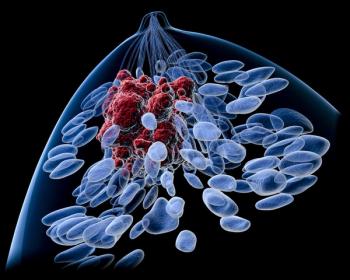
Satya Das, MD, MSCI, on the Use of PRRT in Patients With Well-Differentiated NETs
The expert in hematology/oncology discussed the results of a study which evaluated the use of peptide receptor radionuclide therapy in patients with well-differentiated neuroendocrine tumors.
In an interview with CancerNetwork®, Satya Das, MD, MSCI, assistant professor of Medicine in the department of Medicine of the division of Hematology/Oncology at Vanderbilt University Medical Center, explained the results of a study presented at the 2021 American Society of Clinical Oncology (ASCO) Gastrointestinal Cancer Symposium which evaluated the use of peptide receptor radionuclide therapy (PRRT) in patients with well-differentiated neuroendocrine tumors (NETs).
Transcription:
We created a clinical score for each patient that was being considered for PRRT. The clinical score was comprised of 5 different categories. These categories included the following: treatment types available for a primary tumor, patient symptoms, critical bulk of tumor in certain organs, and then we looked at other facets like peritoneal carcinomatosis. Based on these 5 categories, each patient was scored.
The results from our analysis were as follows. We found about a median clinical score of 5 between all of the patients. Then, 72 patients had a clinical score of less than or equal to 4 and 74 had a clinical score greater than 4.
And then what we did was we actually did a multivariate analysis. We adjusted for certain factors that we know are prognostic to really assess if this score had a predictive type of effect. In our multivariate model, we adjusted for primary tumor site, tumor grade, the number of PRRT doses administered, and the interaction between our clinical score and PRRT doses administered. And what we found was quite interesting.
We found that for in the patients who got PRRT—115 out of the 146 patients got PRRT whereas 31 patients got another treatment, and that was actually really important because we can tell whether the score applied or was predictive in just patients who got PRRT or other patients as well. What we found was that in patients who received PRRT [at] 3 to 4 doses, which is what we considered full dose, for each 2-point increase in the clinical score, the risk or hazard ratio for progression was 3.26. And in patients who did not get PRRT, there was no association between an increase in clinical score and risk of progression, suggesting that this clinical score is actually predictive for PRRT benefit in those patients.
The secondary end point of the study was overall survival. And we saw that for each 2-point increase in the clinical score, the hazard ratio for overall survival worsened by 2.25 times. We did not see a dose effect of this, meaning that this held true for both patients who got PRRT and who didn’t. But we also had very few death events in the analysis given the relatively short follow-up time.
Newsletter
Stay up to date on recent advances in the multidisciplinary approach to cancer.

















































































